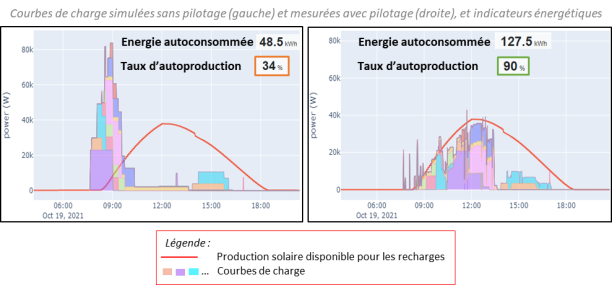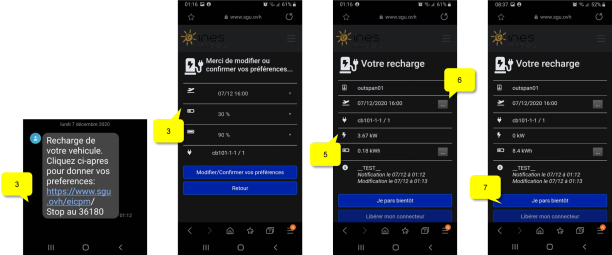At its Cadarache centre near Aix-en-Provence, the CEA has an electric vehicle recharging infrastructure with more than 80 charging points. It provides for the charging of nearly 400 vehicles, mainly personal vehicles but also the centre's taxis and service vehicles. It is one of the most important private infrastructures of its kind in the PACA region and a formidable field for experimentation and demonstration.
Thanks to this infrastructure, RTE and the CEA are experimenting on a large scale (24 recharging points) with a system for supervising and managing the recharging of the electric vehicles of the centre's employees. This management is carried out in real time and must combine user satisfaction by respecting their preferences and synchronising the power consumed with the production of a photovoltaic solar power plant.
The results show, over a period of several months of experimentation, that it is possible to increase the solar share of the energy used by the charging stations from 34% to 90% thanks to the control of vehicle charging, while respecting user preferences.
The study also opens up prospects for new services to be developed/evaluated, for different types of players:
- Optimisation of the occupancy rate of charging stations for charging infrastructure operators
- Shaving services, collective self-consumption for electricity market players
- Optimisation of battery life for users and mobility players


